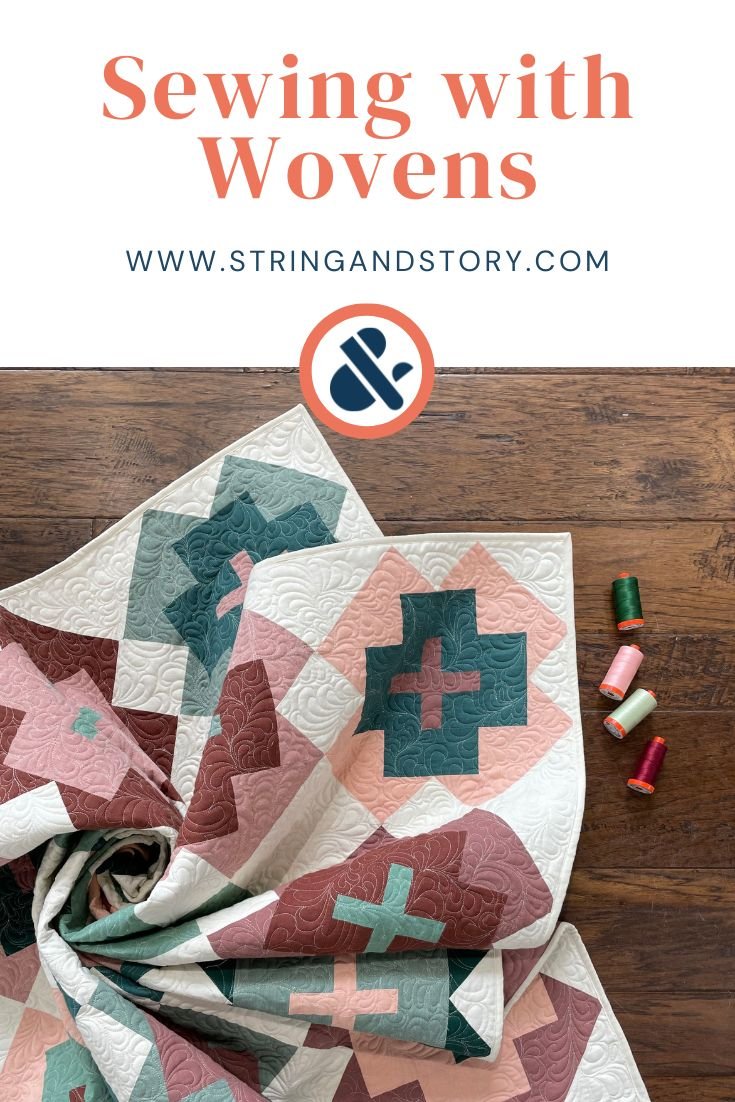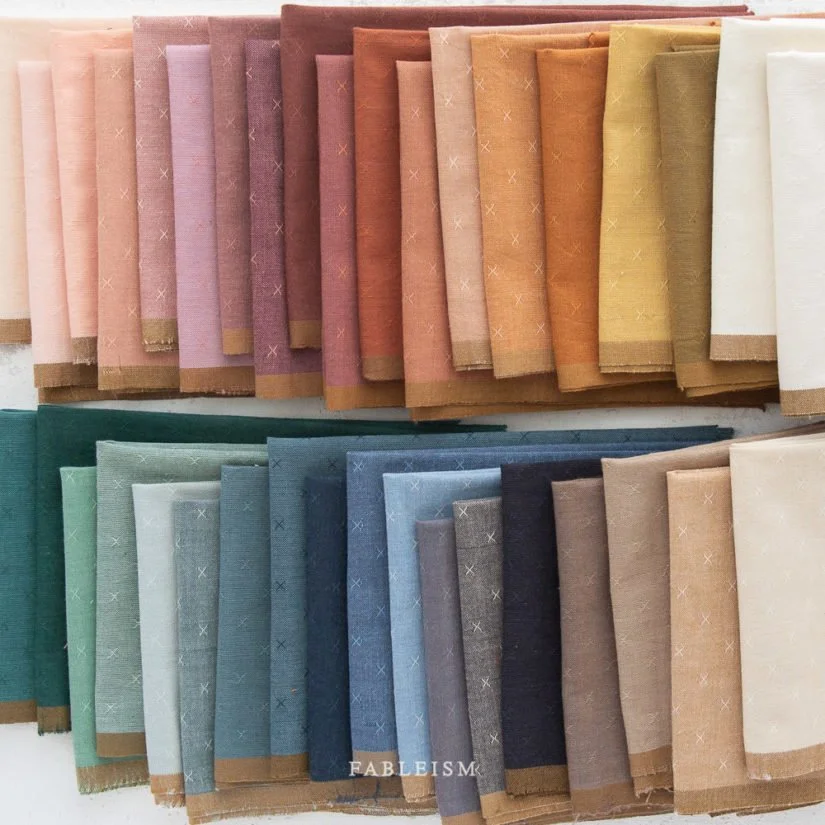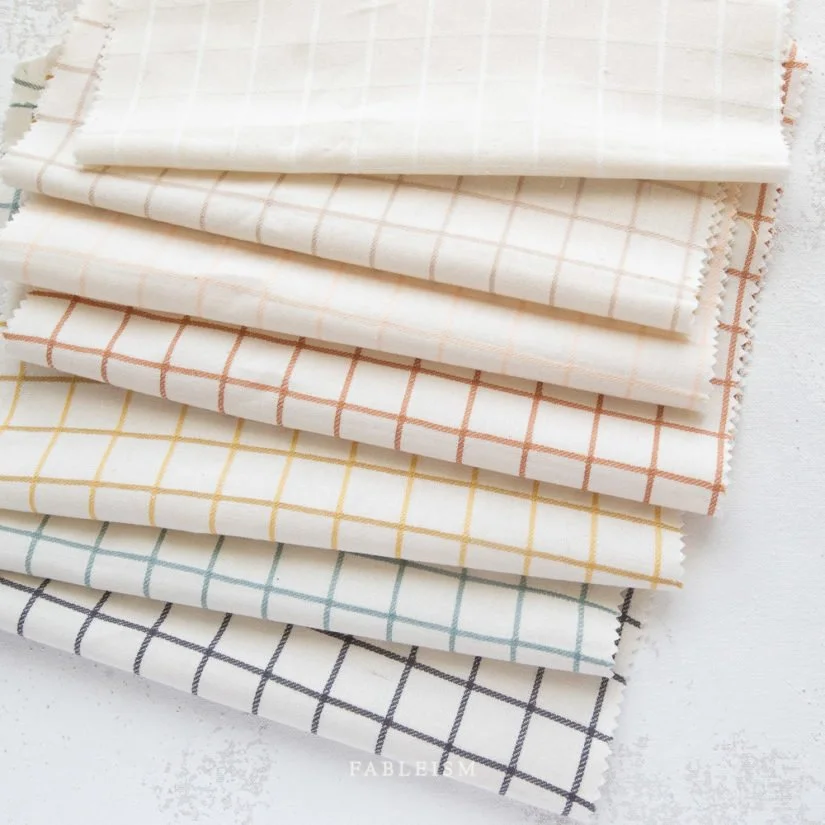Tips for Sewing with Woven Fabrics
Woven fabrics— like linen and looser weave cottons— have been a favorite way to add a little extra texture to quilts for awhile now. Robert Kaufman, Ruby Star Society, Fableism, and more have produced stunning fabric lines that ride the line between quilting and garment sewing. However, looser weave fabrics can fray and ravel more during sewing, so let’s talk about how to minimize that and make sewing with these gorgeous fabrics with a dream.
(This post contains affiliate links)
There’s almost nothing more annoying that cutting, pressing, and piecing with fabrics that seem to fray and unravel with the slightest touch. In fact, in a hurry to get started on a gorgeous quilt recently, I didn’t take the time to make sure my woven fabrics were properly prepped. It’s been fray-city in my sewing space ever since, so I want to share what I’ve learned to prevent you from having the same frustrations.
YES to gorgeous woven quilts and garments
BOO to lots of fraying
What are Woven Fabrics
Some of y’all may be asking, “But aren’t quilting cottons woven?” Yes, they are! And technically the tips I share here will help stabilize all your woven, plant fiber fabrics for cleaner cutting, pressing, and piecing. But I’m especially referring to looser weave fabrics: linen, double gauze, some shirtings, etc. These fabrics have a pattern created by weaving threads or yarns of different colors (and sometimes textures) together to create the pattern.
How to Prevent Fraying
Quilting, especially of more traditional patterns, involves cutting fabric into small pieces, cutting fabric on the bias, and handling the pieces quite a bit during construction. All of these steps can lead to fraying of the fabric edges. The looser the weave of the fabric, the more severely it will ravel as it is handled. There are two easy ways to stabilize the fabric to prevent raveling:
Prewashing
I am the first person to avoid prewashing at all costs (except flannel. I ALWAYS prewash flannel because it inevitably shrinks a ton and bleeds… but anyway). I’m just not that patient or fastidious.
HOWEVER, for some woven fabrics, this is a pretty straight forward way to simply tighten up the weave a bit before you work with the fabric. For example, the Fableism Sprout Wovens shrink a bit when washed for a more linen-y feel, and the weave shrinks together leading to less fraying.
To prewash fabric, serge or zig zag the edges, wash on gentle cycle (cool) with a couple color catchers, then dry on medium. Press, starch if desired, then cut and carry on!
Starching
Here’s the key: Starch BEFORE you do any cutting. Otherwise, good luck (speaking from experience here, though starching with literally every step after that has helped. But it’s a ton more work).
Method 1: Take the yardage, fat quarters, etc for your quilt and press the fabric to warm up the fibers. Then, spray with your favorite starch (I’m all about that Starchless heavy hold). Let the starch soak into the fabric for a minute or too, then press again. Allow to cool before continuing to the next piece or section. If I’m starching a lot of fat quarters, I like to use a laundry rack for them to cool as I go
Method 2: Terial Magic. I learned about this method from Kate over at Tough Kitten Crafts, and it’s the way to go if you want your fabric really stiff. Terial Magic is liquid fabric stabilizer, so it’s really next level. To use, spray your fabric liberally, then let it dry for 10-15 minutes, then iron to set. Your fabric will be very crisp until you wash it later.
I re-starch my fabric during pressing as needed while I piece. I use a clapper for extra flat seams.
Conclusion
Woven fabrics are an amazing way to add texture and dimensionality to your quilting, but some quilters are hesitant to work with them because of the tendency to fray. Fortunately, it’s pretty straightforward to prepare woven fabrics before you begin so you can thoroughly enjoy working with these gorgeous fabrics!
Resources
Shop Wovens:
Sprout Wovens (pictured throughout)
Suggested Patterns:
Nightingale (pictured at top)
Cielo Top (pictured above)
Astra Pattern (pictured below)
Blog Posts






